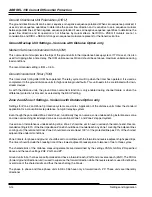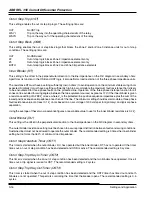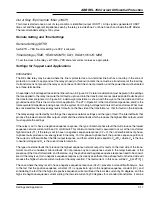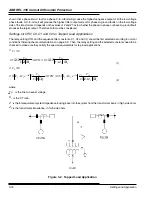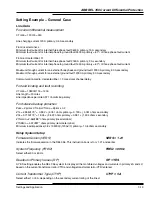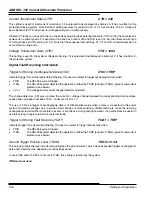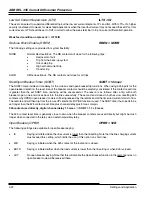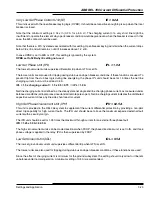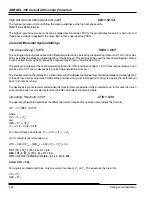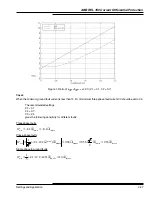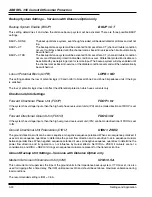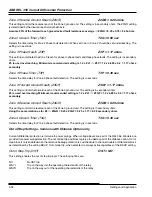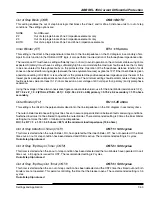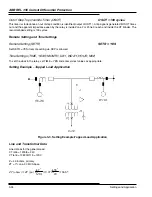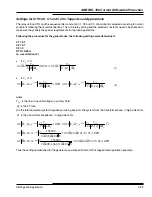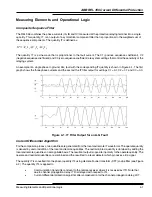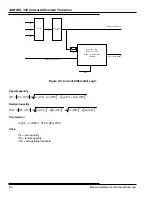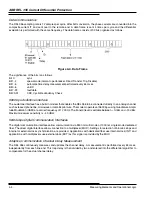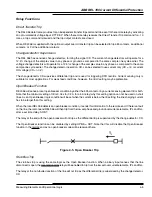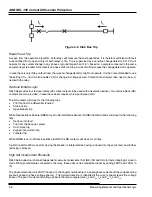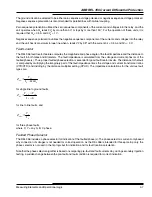
ABB REL 356 Current Differential Protection
3-28
Settings and Application
Automatic Channel Delay Measurement (ALDT)
ALDT = YES
The relay logic continuously performs a communication channel delay measurement. To use this feature, set ALDT to
YES. If fixed channel delay, as set by LDT, is to be used, set ALDT to NO.
ALDT is generally always used.
Lead/Follow Mode (LDFL)
LDFL = LEAD
The LDFL is used for automatic channel delay measurement. One terminal should always be set to LEAD and the other
to FOLO.
If LDFL = LEAD in this end set LDFL = FOLO in the remote end.
Local Delay Timer (LDT)
LDT = 1.3 msec
REL 356 uses the LDT setting when no automatic channel delay measurement is being used (ALDT = NO). If fixed
channel delay is used, LDT should be set to the channel delay displayed in MLDT function of the monitoring functions.
The LDT setting is used for loop-back testing, when automatic delay measurement can not be performed. Then, set LDT
= 1.3 for digital versions and 18.3 for audiotone version.
When ALDT = YES, the DLT setting is ignored by the system.
Set LDT to actual channel delay as measured by the relay in metering mode, MLDT, even though LDT is only
used when ALDT=NO, e.g. during testing.
Unit Identification (UNID)
UNID = 0
This setting eliminates the possibility of connecting two wrong units to each other due to cross connection in the
communication channel matrix.
The UNID numbers in the two units should be adjacent, i.e.
0 in one
and
1 in the other
2 in one
and
3 in the other
10 in one
and
11 in the other
The lower value of the pair should always be an even number.
If UNID = 0 in this end, set UNID = 1 in the remote end.
Communication Speed Selection (KBPS) – 56/64 kbps versions only KBPS = 64kbps
This setting allows 56 kbps or 64 kbps communication speed selection. This setting should be coordinated with any
external communication multiplexer used in the system. A vast majority of applications are 64 kbps.
Transfer Trip (TTRP)
TTRP = IN
The transfer trip function as initiated by a contact closure (TB5 9 to 10) can be enabled or disabled (IN or OUT).
When enabled (TTRP = IN), contact closure will result in transmission of transfer trip code to the remote end. When
received at the remote unit for at least 10 msec, tripping will take place. The remote REL 356 will close either its basic
trip contacts, and/or contacts on the extended output board as determined by the setting DDTT.
Transmit Clock Source (XCLK) – 56/64 kbps versions only
XCLK = IN
This setting establishes the source of the transmit data clock. If XCLK = EXT, the transmit data clock is extracted from
the received data stream. If XCLK = INT, the clock originates from the internal crystal clock oscillator.
Содержание REL 356
Страница 23: ...ABB REL 356 Current Differential Protection 1 10 Product Overview and Specifications ...
Страница 83: ...ABB REL 356 Current Differential Protection 3 36 Settings and Application ...
Страница 127: ...ABB REL 356 Current Differential Protection 5 28 Testing ...
Страница 186: ...LINE SECTIONALIZING USING A PLC AND ABB PROTECTIVE RELAY Page 49 of 53 ...
Страница 187: ...LINE SECTIONALIZING USING A PLC AND ABB PROTECTIVE RELAY Page 50 of 53 ...
Страница 188: ...LINE SECTIONALIZING USING A PLC AND ABB PROTECTIVE RELAY Page 51 of 53 ...
Страница 189: ...LINE SECTIONALIZING USING A PLC AND ABB PROTECTIVE RELAY Page 52 of 53 ...

